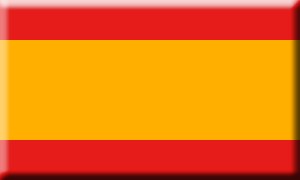Bien qu'il s'agisse
d'une entreprise spécialisée dans le développement de produits pour la radio et
la télévision, la RVR a réalisé des réalisations antérieures dans d'autres
secteurs tels que l'industrie, les services et la science.
La RVR est complète
dans la conception des applications d'ingénierie radio, depuis les composants
spécifiques pour la RF jusqu'à l'industrialisation finale de l'équipement
jusqu'aux systèmes qui constituent les stations d'émission. Les signaux audio
et vidéo entrant dans l'équipement RVR pour sortir de l'antenne sur la tour de
transmission, à travers les modulateurs, amplificateurs, filtres, additionne
plus de stations, tous par des produits RVR. La gestion de ces signaux à
travers tous les dispositifs qui sont connectés dans le chemin du début à la
fin, cela signifie d'avoir une expérience significative dans la conception de
circuits à faible bruit, haute puissance, haute fréquence, pour l'alimentation,
il signifie aussi Obtenir la capacité de concevoir des arrangements mécaniques
adaptés pour échanger des quantités de chaleur forte convenable pour protéger
de forts champs électromagnétiques, cela signifie aussi avoir une compréhension
ferme de la propriété électrique et mécanique des matériaux utilisés dans les
projets parce que la technique est l'une des zones De radio dans lequel rien
n'est facilement mesurable et contrôlable
La somme des
compétences nécessaires pour concevoir leur propre type de produits a conduit
la RVR à s'exprimer de manière appréciable dans les réalisations n'appartenant
pas à son cœur de métier, des expériences qui ont servi à confirmer leur
réalisation de capacité en général, même si elles n'ont pas paru avec En
mettant l'accent sur l'information spécialisée des nombreux domaines couverts
Pour des demandes personnalisées, veuillez contacter notre service technique
FOR INDUSTRIES:
RVR has designed RF power amplifiers used in the industry that controls LASER as a tool for mechanical machining. It is not just a simple adaptation of one of its many radio broadcast amplifiers, in fact the operational issues that are called to work on an industrial amplifier required an important effort to review all the controls of the apparatus, the necessary protections, to the power supply up to the output RF outputs, in fact a real new project inherited from the consolidation from which the containment rack and the mechanical panels were derived for its closure. Executions in this area have been made with both thermo-ionic technology and solid state devices, a sizable scrutiny for design skills for a technical office, where only a mature technical ability could make it successful.
BROADCASTING SPECIAL APPLICATIONS:
RVR has designed special RF components for its industry, which usually do not appear in the self-produced catalog for their rare use in broadcast but which are more frequent in radio astronomy. We refer to two devices:With Hijacker's trade name, we talk about a device that lets you handle the signal transmitted by the antenna in order to control the radially covered dock, all while the high-power signal is present.A second device is known by the term Switchless-Combiner, which is an object that allows to handle two amplifiers on the same signal that can be summed up or simply exchanged to the antenna alternately, all in full power Over 100KW total. None of these two devices are mentioned in school books, they are the product of a capacity to create. This is a casual ability of RVR to inspire what is commonly done in the scientific field to translate it into special answers to special requests from its customers.
PREVENTION NATURAL DISASTERS:
RVR has designed highly specialized professional amplifiers such as transmitters used at NOAA. They are transmitters that must ensure almost unstabilistic operational capabilities as they are used during emergencies on the territory affected by civil protection intervention. The RVR R & D office here has had to strive to find solutions on how to survive the devices at temperatures from -40 to +50 degrees Centigrade, how to operate however when the power supply network is precarious and the damaged antenna , All with RF signals of at least 1kW obtained from the input of three combined amplifiers to ensure an adequate redundancy margin. Apart from the important operational difficulties that RVR has had to find a solution, the industrialization phase designed to allow the replacement of failed circuits in record time and by unskilled personnel was very important in this project, Practically in this project RVR has used design techniques that can be traced back to MIL standards.
SCIENTIFIC RESEARCH:
RVR has also designed very specific scientific equipment for CNR. No current production equipment was close enough to the needs of the customer who demanded a 1kW amplifier operating at frequencies over 1GHz with unstably applied load, high gain, very challenging excitation signal modulation. Through challenging projects like this, RVR trained in the subsequent design of equipment for their industry, thus using such opportunities to train staff of their own engineering office on high-frequency RF design techniques where nothing has already been done So that you can apply reverse engineering techniques, a true all-in-action exercise on creativity.
WEATHER:
RVR has also designed dimensional and low power devices, unlike their own specialty, where precision parameter is very important. These are special sensors to monitor and then quantify the hydrometeor or sensors to measure the amount of water contained in the sands discharged at the material reserves in the ceramic industry. In applications such as these, RVR challenges were centimeter-wavelength frequencies or the construction of circuits to be housed in containers subject to heavy wear and for this reason forced to adopt materials not particularly suitable to work conveniently in RF.
RESEARCH IN UNIVERSITY FIELD:
RVR has also designed individual rack systems for special applications required by many universities including the University of Genoa's electrical measurements. A request made to many companies by an institute operating in a cutting-edge industry, at the time, found only RVR response and full satisfaction of the applicant. The apparatus serves to measure the seal of the enamel covers applied to the copper conductors that is used in the windings, in question then it was to be able to evaluate how reliable an electromagnetic insulation is susceptible to as it happens in the windings subject to the high frequency switched currents Delivered from inverter devices. The project was quite challenging as they were in the field: high voltage up to 6kV, high power up to 3kW, wide frequency band from DC to 1MHz and the amplifier must systematically handle the final test result, that is, a short-circuit from Perforating the insulation that ends the measure to be carried out. A real exercise on the design of an apparatus completely different from those in the RVR catalog and which has served to experiment with technical solutions to be used in the future.
SPACE-ASTRONOMY:
RVR has always been in possession of drawings of many critical RF parts for their operating conditions, RVR generates directly what it needs and therefore does not stop when a component that does not belong to the collections available from specialized suppliers is needed. This is the case for the latest generation, a 10kW UHF bandwidth amplifier consisting of 7 power up to 2kW power supplies where a 7-way RF power amplifier and a coaxial junction must be able to rotate around its own Axis up to 360 degrees without rewinding. The coaxial line rotation, in particular, required extensive studies involving more technical disciplines: the mechanical for the calculation of transverse twists and axial tensions, thermotechnics for thermal dilatation problems of the different coupled materials, chemistry For the evaluation of materials suitable for environmental stresses, all complicated by the limits of choice that radio technology imposes on both the type of materials and the geometries that are practicable for the realization. The well-matured experience of RVR has also allowed to meet other demanding requirements of This project, such as power gain stability within dB fractions and the signal band whose modulation includes both On-Off-Keying variation for frequency amplitude and Chirp Sweep frequency. RVR skills in projects such as these are also essential to advise the customer on unexpected logistical aspects such as housing an apparatus of this size and how to calculate its cooling air requirements.





